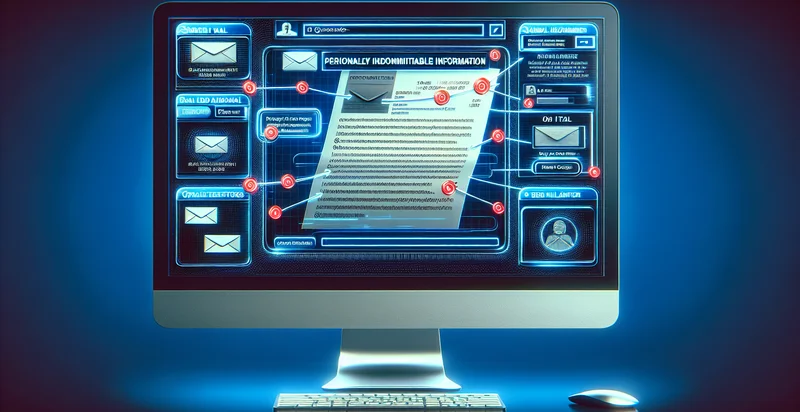Identify if PII is in an email
using AI
Below is a free classifier to identify if PII is in an email. Just input your text, and our AI will predict if there is personally identifiable information - in just seconds.

Contact us for API access
Or, use Nyckel to build highly-accurate custom classifiers in just minutes. No PhD required.
Get started
import nyckel
credentials = nyckel.Credentials("YOUR_CLIENT_ID", "YOUR_CLIENT_SECRET")
nyckel.invoke("if-pii-is-in-an-email", "your_text_here", credentials)
fetch('https://www.nyckel.com/v1/functions/if-pii-is-in-an-email/invoke', {
method: 'POST',
headers: {
'Authorization': 'Bearer ' + 'YOUR_BEARER_TOKEN',
'Content-Type': 'application/json',
},
body: JSON.stringify(
{"data": "your_text_here"}
)
})
.then(response => response.json())
.then(data => console.log(data));
curl -X POST \
-H "Content-Type: application/json" \
-H "Authorization: Bearer YOUR_BEARER_TOKEN" \
-d '{"data": "your_text_here"}' \
https://www.nyckel.com/v1/functions/if-pii-is-in-an-email/invoke
How this classifier works
To start, input the text that you'd like analyzed. Our AI tool will then predict if there is personally identifiable information.
This pretrained text model uses a Nyckel-created dataset and has 2 labels, including Contains Personal Information and Does Not Contain Personal Information.
We'll also show a confidence score (the higher the number, the more confident the AI model is around if there is personally identifiable information).
Whether you're just curious or building if PII is in an email detection into your application, we hope our classifier proves helpful.
Related Classifiers
Need to identify if PII is in an email at scale?
Get API or Zapier access to this classifier for free. It's perfect for:
- Email Compliance Monitoring: Organizations can use the 'if pii is in an email' identifier to ensure compliance with data protection regulations such as GDPR and CCPA. By automatically scanning emails for personally identifiable information (PII), companies can identify potential violations and take corrective action to safeguard sensitive data.
- Risk Management: Businesses can leverage this classification function to assess the risk associated with data leaks. By identifying emails containing PII, organizations can implement corrective measures and training for employees to minimize the risk of data breaches.
- Automated Data Compliance Reporting: Implementing a system that flags emails with PII can streamline compliance reporting. Companies can generate reports that detail instances where sensitive information was communicated, helping stakeholders understand exposure levels and improve governance practices.
- Enhanced Data Security Protocols: By integrating this function into email systems, organizations can enforce stricter data security protocols. Emails flagged as containing PII can be quarantined, encrypted, or require additional approvals before being sent, thereby protecting sensitive information from unauthorized access.
- Employee Training and Awareness Programs: This identifier can be used to track the frequency of PII disclosures in corporate communications. Insights gained can inform training programs for employees, focusing on best practices for handling sensitive information and reducing inadvertent sharing.
- Customer Communication Optimization: Companies can analyze flagged emails to better understand customer interactions involving PII. By identifying trends, organizations can adapt their communication strategies to enhance customer trust and ensure proper handling of sensitive information.
- Incident Response and Forensics: In the event of a data breach, this identification function can aid in responding effectively. By pinpointing which emails contained PII, organizations can more accurately assess the scope of the breach and take necessary actions to mitigate any potential impact on affected individuals.


